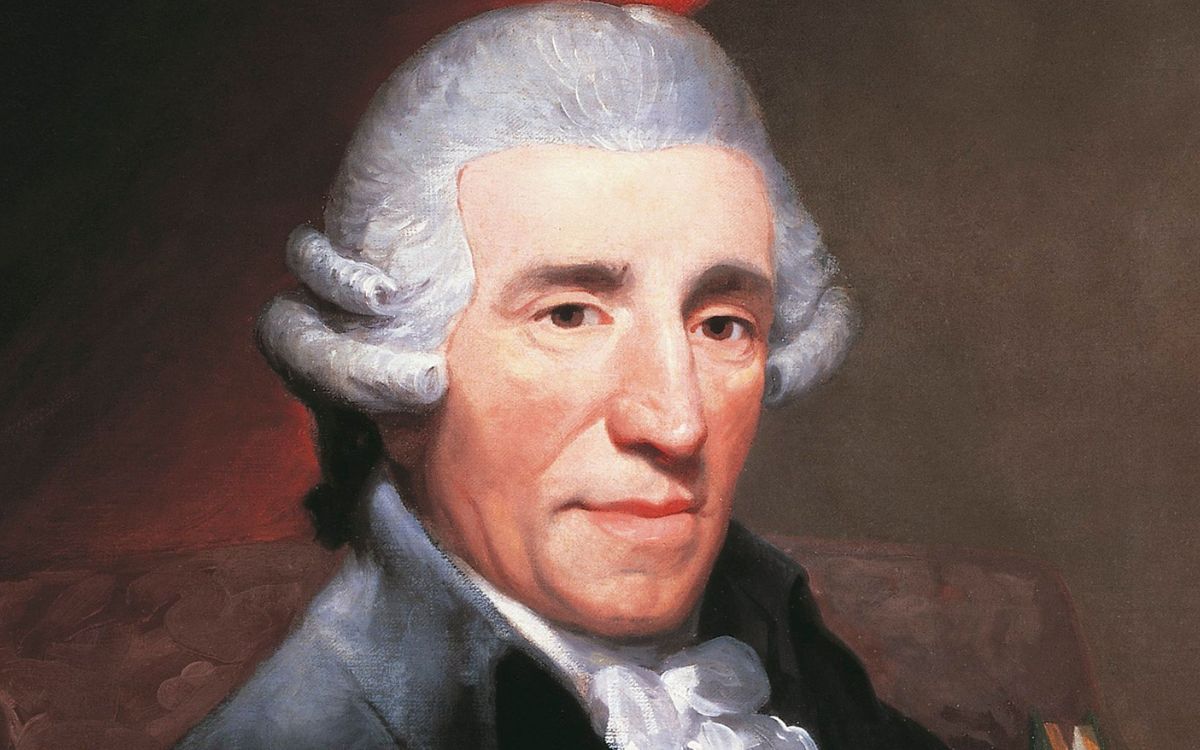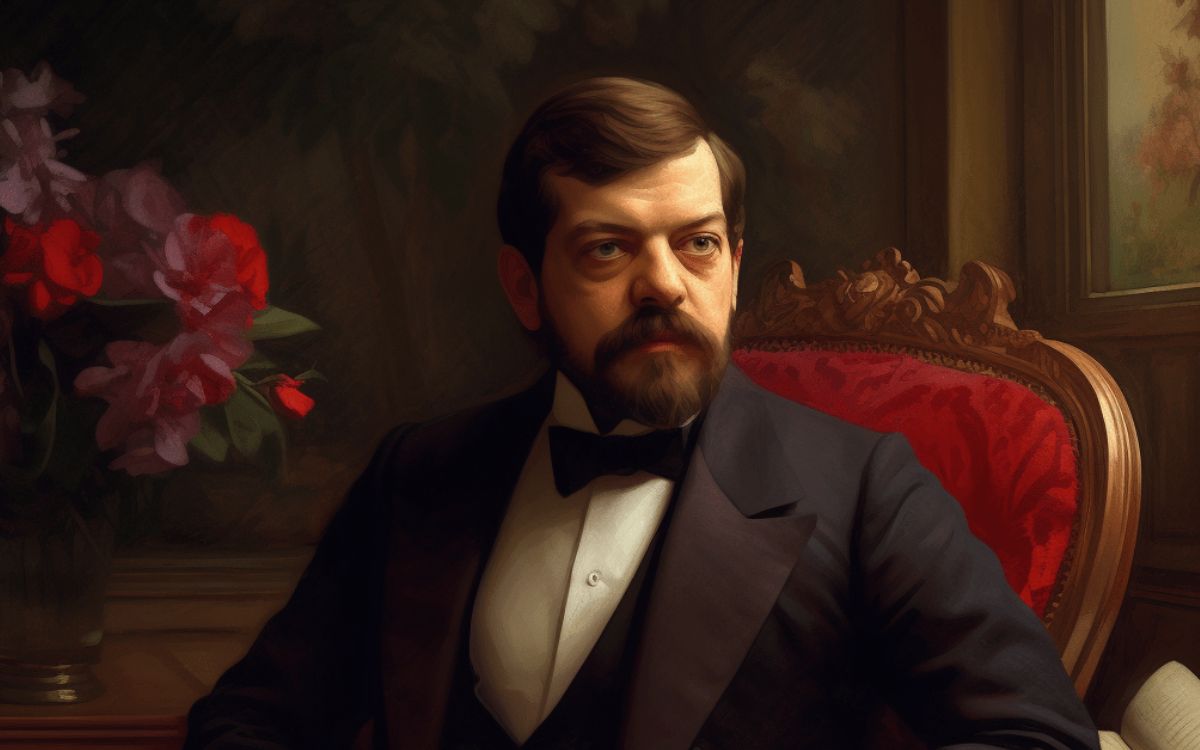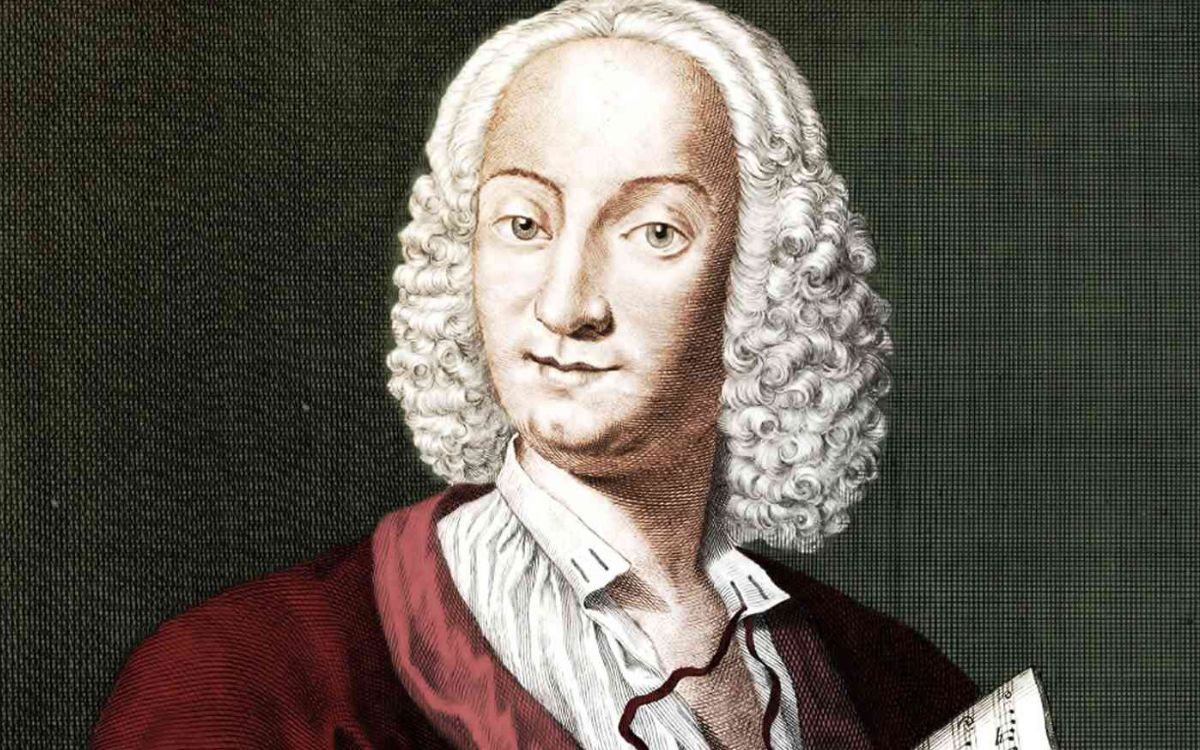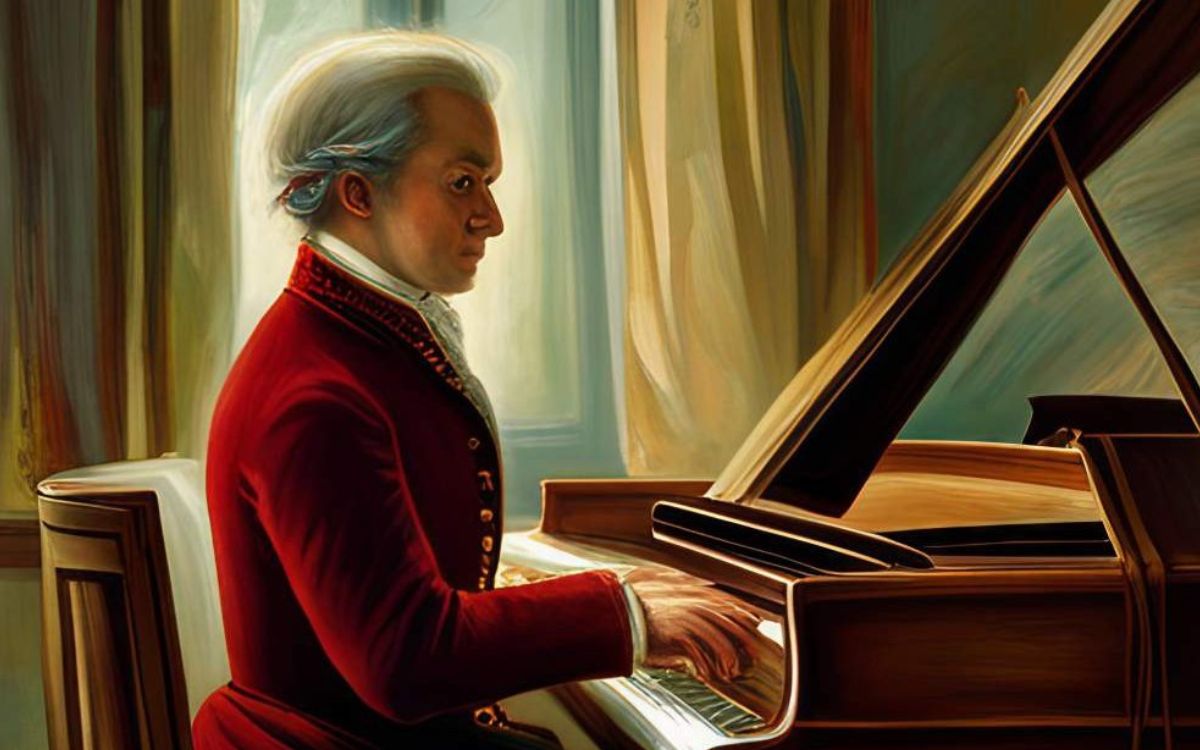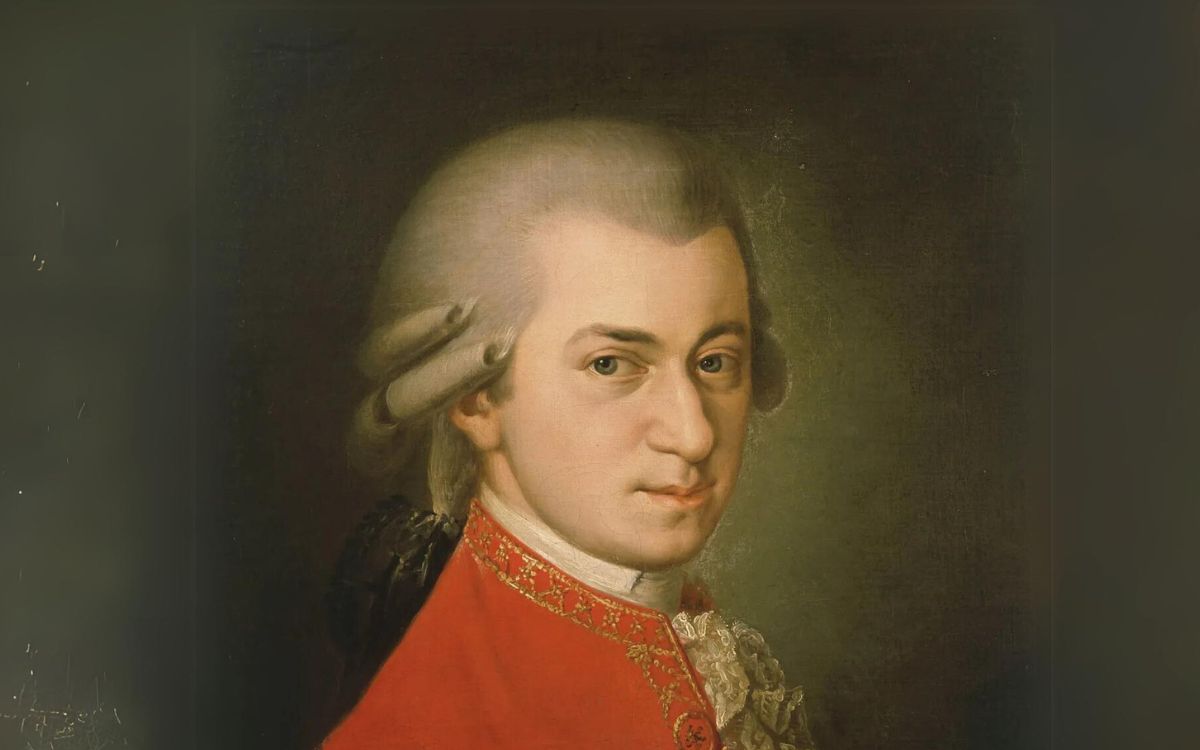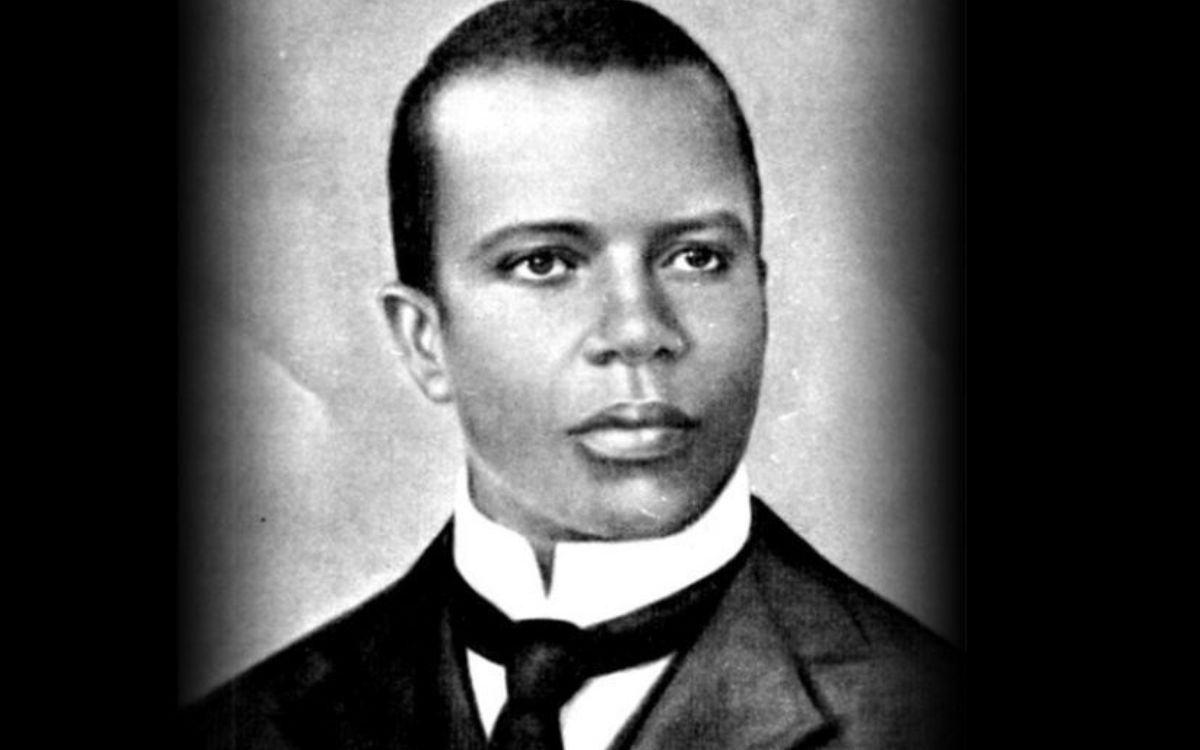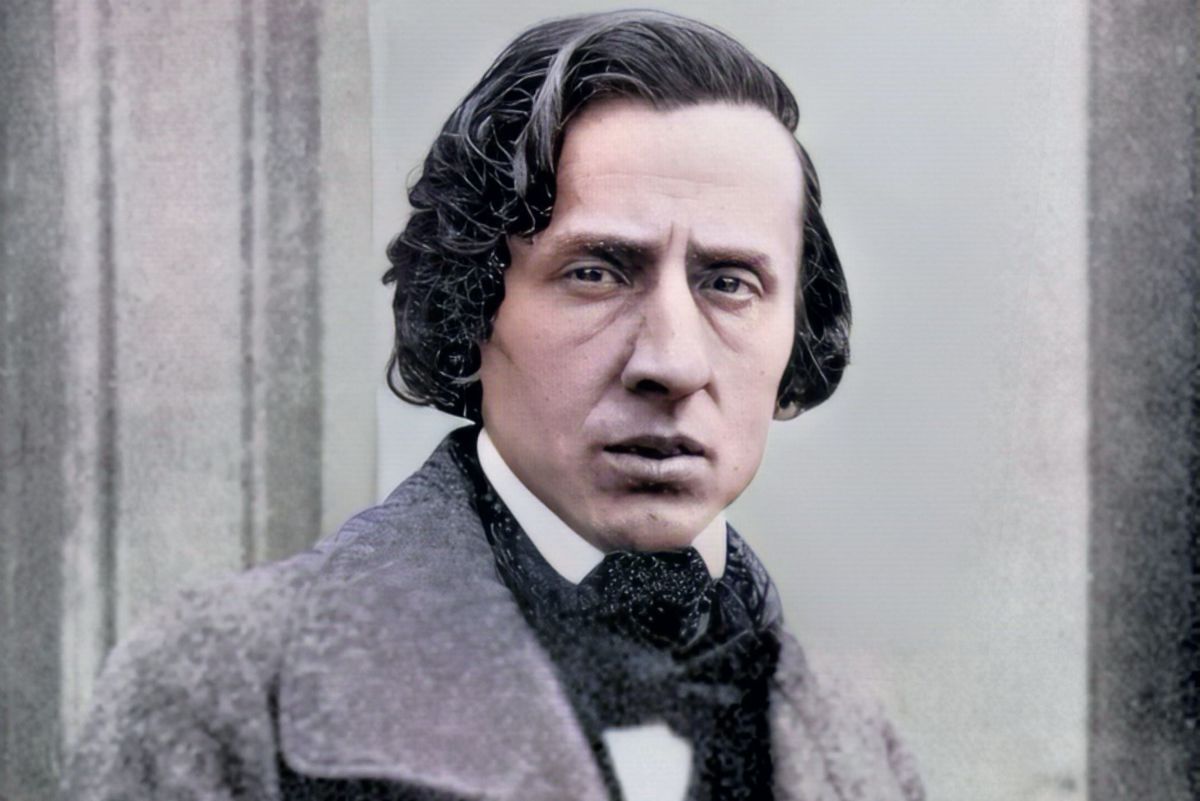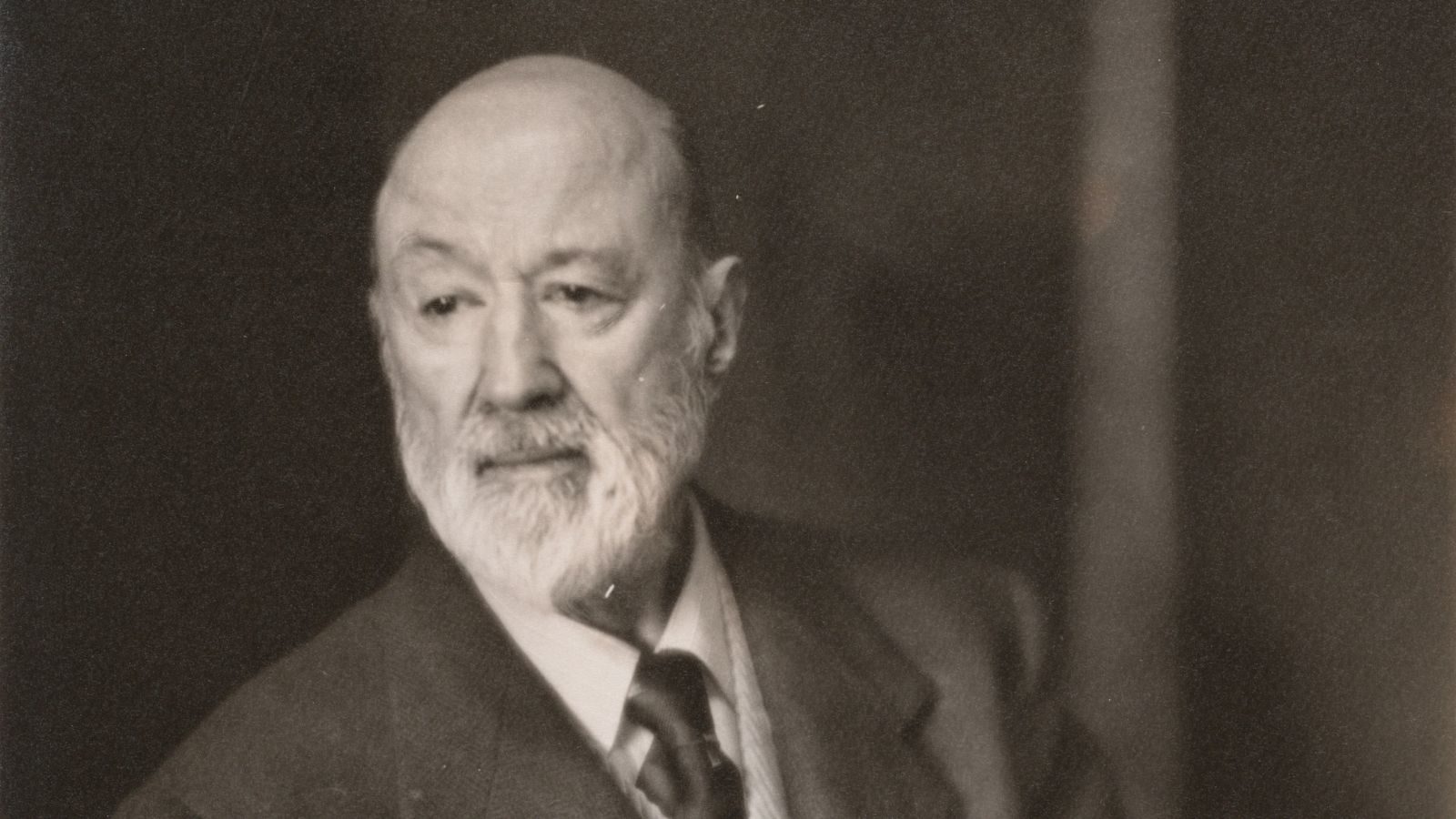Home>Production & Technology>Composer>Which Composer Was Known For His Messe De Nostre Dame?
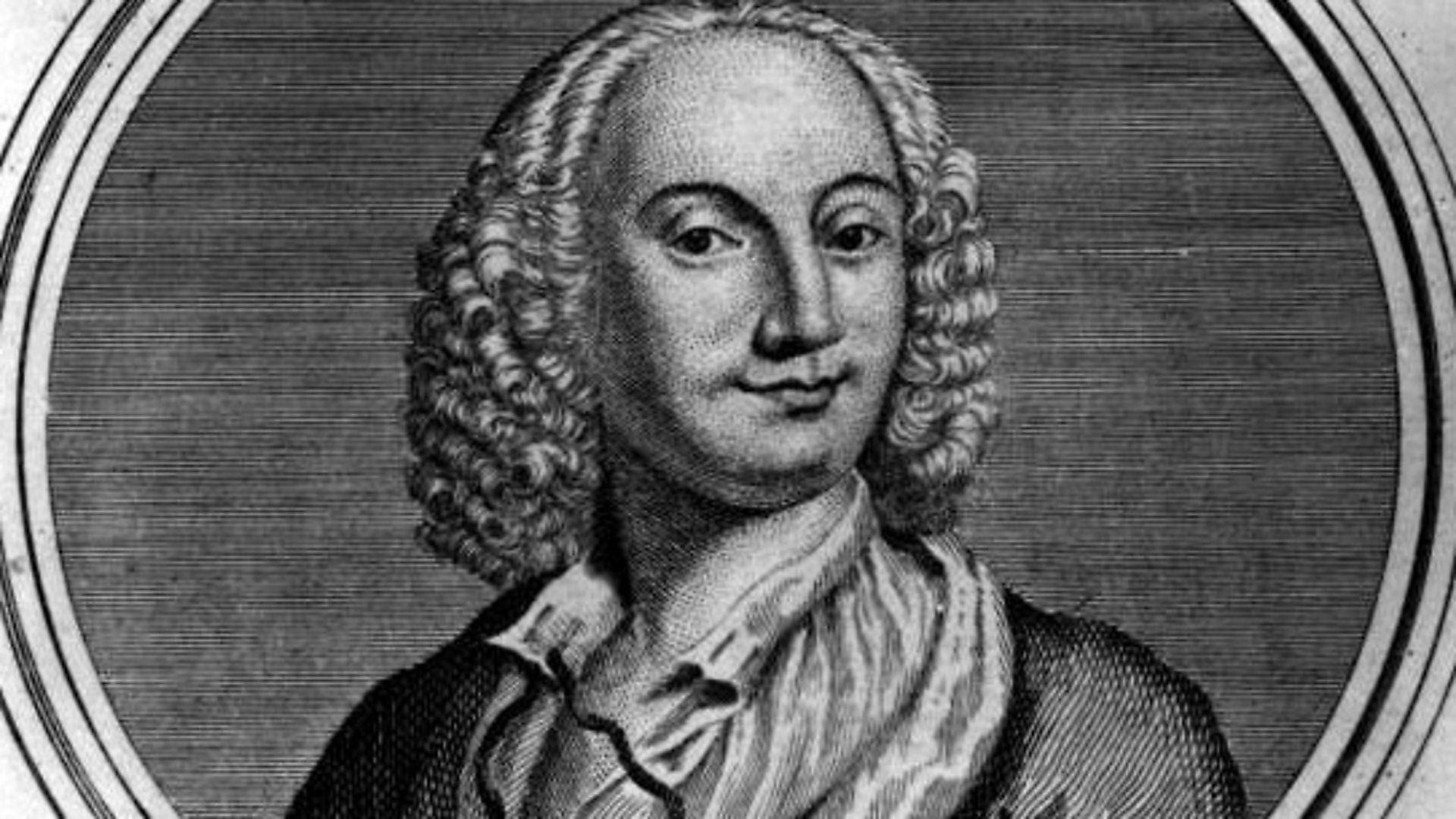

Composer
Which Composer Was Known For His Messe De Nostre Dame?
Published: December 6, 2023
Discover which composer is famous for his Messe de Nostre Dame and explore the remarkable works of this talented composer.
(Many of the links in this article redirect to a specific reviewed product. Your purchase of these products through affiliate links helps to generate commission for AudioLover.com, at no extra cost. Learn more)
Table of Contents
Introduction
When discussing the history of Western classical music, there are certain composers whose contributions have left an indelible mark. One such composer is known for his groundbreaking work in musical composition during the medieval period – the composer of the celebrated Messe de Nostre Dame.
The Messe de Nostre Dame, which translates to “Mass of Our Lady,” is a masterful composition that revolutionized the way sacred music was approached. The composer’s innovative techniques and harmonic progressions laid the foundation for future generations of composers.
In this article, we will explore the life and legacy of the composer behind the Messe de Nostre Dame and delve into the intricacies of this remarkable musical composition. We will examine its significance, analyze its musical elements, and discuss its enduring impact on the world of classical music.
Join us on this journey as we unravel the fascinating story behind the composer of the Messe de Nostre Dame and discover the profound influence this composition has had on the development of Western music.
Biography of a Renowned Composer
The composer behind the iconic Messe de Nostre Dame is none other than Guillaume de Machaut. Born around 1300 in the region of Champagne, France, Machaut lived during a time of great social and artistic transformation.
Machaut’s early life is relatively undocumented, but we know that he received a comprehensive education and was well-versed in a wide range of disciplines, including mathematics, philosophy, and poetry. He served as a secretary and courtier to several noble families, including the King of Bohemia and the King of France, which provided him with opportunities to interact with esteemed poets and musicians of his time.
What sets Machaut apart from his contemporaries is the fact that he was not only a composer but also an accomplished poet. He wrote both the text and the music for many of his compositions, creating a seamless integration of words and music that was groundbreaking for his era.
As a poet, Machaut is best known for his collection of love poems called the Remede de Fortune (Remedy of Fortune), which explores themes of courtly love and unrequited desire. These poems were set to music, showcasing Machaut’s unique ability to merge his literary and musical talents.
Machaut’s musical career flourished under the patronage of various influential figures, including Jean, Duke of Normandy, who later became King Jean II of France. In addition to writing secular vocal music, Machaut composed sacred works, including polyphonic motets and the Mass compositions that would later shape his legacy.
The exact dates of Machaut’s birth and death are not known with certainty, but he is believed to have lived until around 1377. Despite the passage of time, his musical contributions continue to inspire and captivate audiences around the world.
The Origins and Importance of the Messe de Nostre Dame
The Messe de Nostre Dame stands as a remarkable testament to the musical genius of Guillaume de Machaut and represents a pivotal moment in the history of Western music. This composition, completed around 1364, marked a turning point in the development of the Mass as a musical form and solidified Machaut’s position as a pioneering composer.
The origins of the Messe de Nostre Dame can be traced back to the Notre Dame School of Polyphony in Paris, where Machaut found inspiration from earlier composers such as Leonin and Perotin. Machaut expanded upon the polyphonic techniques developed by his predecessors and infused the Mass with his signature style.
One of the most significant contributions of the Messe de Nostre Dame was its unified composition. Prior to Machaut’s work, the parts of the Mass were typically composed by different composers, resulting in a fragmented and disjointed musical experience. Machaut took on the monumental task of composing an entire Mass, from the Kyrie to the Agnus Dei, creating a harmonious and cohesive musical journey.
Another revolutionary aspect of the Messe de Nostre Dame was its use of isorhythm. Isorhythm is a technique that involves repeating rhythmic and melodic patterns throughout a composition, adding a sense of structure and complexity. Machaut employed this technique in various movements of the Mass, showcasing his innovative approach to composition.
Additionally, the Messe de Nostre Dame showcased Machaut’s mastery of counterpoint, a technique that involves the combination of multiple melodic voices. The intricate interplay between the vocal lines in the Mass demonstrates Machaut’s skillful craftsmanship and artistic vision.
The importance of the Messe de Nostre Dame extends beyond its musical innovations. It marked a shift towards greater emphasis on the contrapuntal style in sacred music, paving the way for future composers to explore the possibilities of polyphony. The influence of this composition can be seen in the works of subsequent composers, such as Josquin des Prez and Giovanni Pierluigi da Palestrina, who built upon Machaut’s foundations and contributed further to the development of Western classical music.
Overall, the Messe de Nostre Dame is a testament to Machaut’s mastery of composition and his ability to push the boundaries of musical expression. Its unified structure, use of innovative techniques, and lasting impact make it a cornerstone of medieval sacred music and a testament to Guillaume de Machaut’s enduring legacy.
Analysis of the Messe de Nostre Dame
The Messe de Nostre Dame is a composition that showcases the meticulous craftsmanship and innovative musical techniques of Guillaume de Machaut. Through careful analysis, we can uncover the intricacies and brilliance of this remarkable piece.
One of the defining features of the Messe de Nostre Dame is the use of isorhythm, a technique that involves the repetition of rhythmic and melodic patterns throughout a composition. Machaut employed a systematic approach to isorhythm, using recurring tenor and color patterns as the foundation for each movement of the Mass. This technique adds a sense of coherence and structure to the composition, creating a unified musical experience.
Another notable aspect of the Messe de Nostre Dame is its polyphonic texture. Machaut skillfully weaves together multiple vocal lines, creating rich harmonies and intricate contrapuntal interactions. The voices move independently yet harmoniously, creating a sense of depth and complexity within the composition.
In terms of the harmonic language, Machaut’s use of consonance and dissonance is masterful. He skillfully resolves dissonant intervals, creating moments of tension and resolution that add emotional depth to the music. The harmonic progressions in the Messe de Nostre Dame are both sophisticated and expressive, showcasing Machaut’s keen understanding of musical structure and emotional impact.
Furthermore, Machaut’s choice of melodic lines and motifs contributes to the distinctive character of each movement. The melodies are carefully crafted, often featuring wide leaps and melodic ornamentation that add richness and variety to the overall musical texture.
A closer examination of the text and its relationship to the music is also essential in understanding the Messe de Nostre Dame. Machaut’s ability to set the Latin liturgical texts with sensitivity and musical expression is evident throughout the composition. The music enhances the meaning and emotion of the words, creating a profound spiritual experience for the listener.
Overall, the Messe de Nostre Dame is a testament to Machaut’s mastery of composition and innovation. Its use of isorhythm, polyphony, harmonic language, melodic motifs, and textual sensitivity all contribute to its enduring musical brilliance. Through careful analysis, we gain a deeper appreciation for the intricacies and artistry of this remarkable composition.
Musical Innovations in the Messe de Nostre Dame
The Messe de Nostre Dame, composed by Guillaume de Machaut, introduced several groundbreaking musical innovations that had a profound impact on the development of Western music. These innovations not only set the Messe de Nostre Dame apart as a remarkable composition but also laid the foundation for future generations of composers.
One of the key musical innovations in the Messe de Nostre Dame is Machaut’s use of isorhythm. Isorhythm involves the repetition of rhythmic and melodic patterns throughout a composition. In the Mass, Machaut employs isorhythmic techniques by using recurring tenor and color patterns. This creates a sense of structure and unity within each movement, demonstrating Machaut’s mastery of intricate musical design.
Another significant innovation is Machaut’s approach to polyphony. The Messe de Nostre Dame showcases Machaut’s skillful interweaving of multiple vocal lines, each with its own melodic and rhythmic independence. This polyphonic texture enriches the musical experience, allowing for intricate contrapuntal interactions and creating a sense of depth and complexity.
Machaut also pushed the boundaries of harmonic language in the Messe de Nostre Dame. He skillfully blends consonance and dissonance, creating moments of tension and resolution that add emotional depth to the music. The harmonic progressions in the Mass are both sophisticated and expressive, demonstrating Machaut’s ability to manipulate harmony to evoke specific moods and feelings.
Additionally, Machaut’s melodic innovations are evident throughout the composition. He employs wide leaps, melodic ornamentation, and varied melodic contours, which add richness and variety to the musical texture. These melodic choices contribute to the unique character of each movement and highlight Machaut’s creative approach to composition.
Furthermore, the Messe de Nostre Dame revolutionized the way sacred music was approached. Machaut’s decision to compose an entire Mass from the Kyrie to the Agnus Dei, rather than having different parts composed by various individuals, was a significant departure from the traditional approach. This unified composition showcased Machaut’s artistic vision and paved the way for future composers to view the Mass as a cohesive musical entity.
Overall, the musical innovations in the Messe de Nostre Dame demonstrate Guillaume de Machaut’s exceptional creativity and the audacity with which he approached composition. His use of isorhythm, polyphony, harmonic language, and melodic innovations broke new ground in medieval music and left a lasting impact on the evolution of Western music as a whole.
Reception and Influence of the Messe de Nostre Dame
Upon its completion, the Messe de Nostre Dame by Guillaume de Machaut garnered widespread acclaim and significantly shaped the trajectory of Western music. Its reception and enduring influence continue to resonate throughout the centuries.
In the medieval period, the Messe de Nostre Dame was regarded as a groundbreaking work of musical genius. It was well-received by both clergy and the general public, with its innovative techniques and cohesive structure capturing the attention of listeners. The composition’s blend of isorhythm, polyphony, and harmonies created a musical experience that was both enchanting and spiritually profound.
The influence of the Messe de Nostre Dame extended far beyond its immediate time period. Machaut’s innovative approaches to composition and musical structure laid the groundwork for future generations of composers. Elements such as isorhythm and polyphony that were utilized in the Mass would become central to the development of Western music.
One composer directly influenced by the Messe de Nostre Dame was Johannes Ockeghem. Ockeghem, one of the most important composers of the fifteenth century, expanded upon the complexity and depth of Machaut’s polyphonic techniques, building upon the foundations established in the Messe de Nostre Dame.
The impact of the Messe de Nostre Dame also resonates in the works of later composers during the Renaissance and beyond. Its influence can be heard in the compositions of Josquin des Prez, Palestrina, and even Bach. Machaut’s innovative techniques and harmonic progressions were foundational to the development of Western music, contributing to the rich tapestry of musical expression over the centuries.
The Messe de Nostre Dame continues to be performed and studied by musicians, scholars, and enthusiasts worldwide. Its enduring appeal lies in its artistic brilliance and historical significance, as well as its ability to evoke a sense of transcendent spirituality. Performances of the Messe de Nostre Dame allow listeners to experience the beauty and innovation of Machaut’s composition, creating a profound connection to the past and a deeper appreciation for the evolution of musical expression.
Guillaume de Machaut’s Messe de Nostre Dame stands as a testament to his mastery of composition and his ability to push the boundaries of musical expression. Its reception and lasting influence highlight its significance as a groundbreaking composition that continues to captivate and inspire audiences today.
Conclusion
The Messe de Nostre Dame by Guillaume de Machaut is a masterpiece that has left an indelible mark on the history of Western classical music. Machaut’s innovative composition techniques, such as the use of isorhythm and polyphony, have shaped the development of Western music and influenced generations of composers.
Through careful analysis, we have explored the life and legacy of Guillaume de Machaut, the origins and importance of the Messe de Nostre Dame, its musical innovations, and its reception and lasting influence. Machaut’s musical genius shines through in the meticulous craftsmanship and artistic vision displayed in this remarkable composition.
The Messe de Nostre Dame stands as a testament to Machaut’s ability to seamlessly blend poetry and music. His skillful integration of melodic lines, harmonies, and rhythmic patterns creates a cohesive and unified musical experience that captivates audiences to this day. The use of isorhythm, polyphony, and innovative harmonic language all contribute to the richness and complexity of the composition.
Furthermore, the Messe de Nostre Dame’s influence extends beyond its initial reception. It has served as a source of inspiration for subsequent composers, shaping the development of Western music and leaving its mark on the works of composers such as Ockeghem, Josquin des Prez, Palestrina, and beyond. Its timeless appeal continues to draw performers, scholars, and music enthusiasts, allowing them to connect with the profound spirituality and artistic brilliance of this monumental composition.
In conclusion, the Messe de Nostre Dame is a testament to Guillaume de Machaut’s mastery of composition, his innovative musical techniques, and his lasting impact on the world of classical music. Its enduring legacy serves as a reminder of the transformative power of music and the ability of a single composer to shape the course of musical history.


